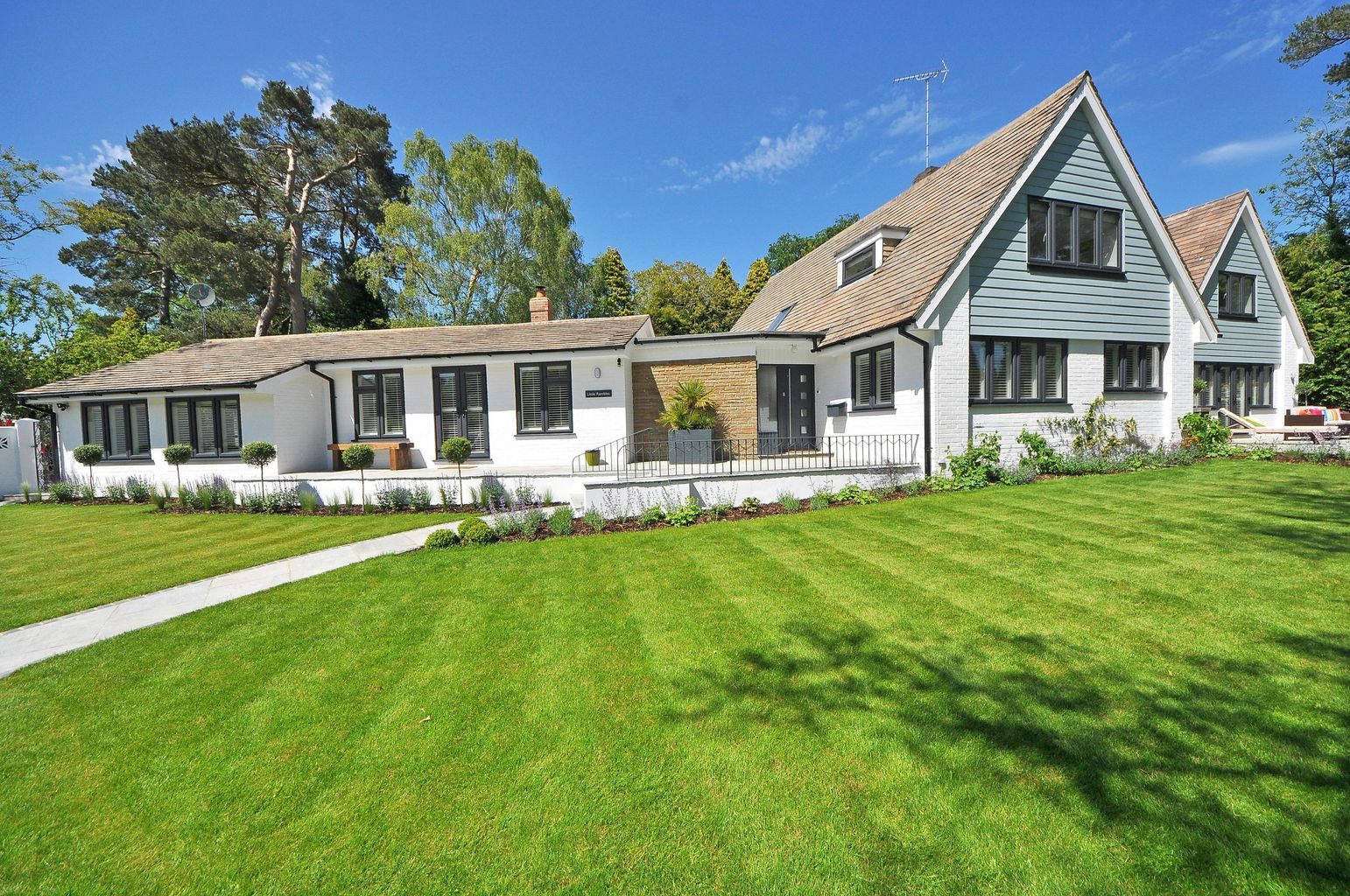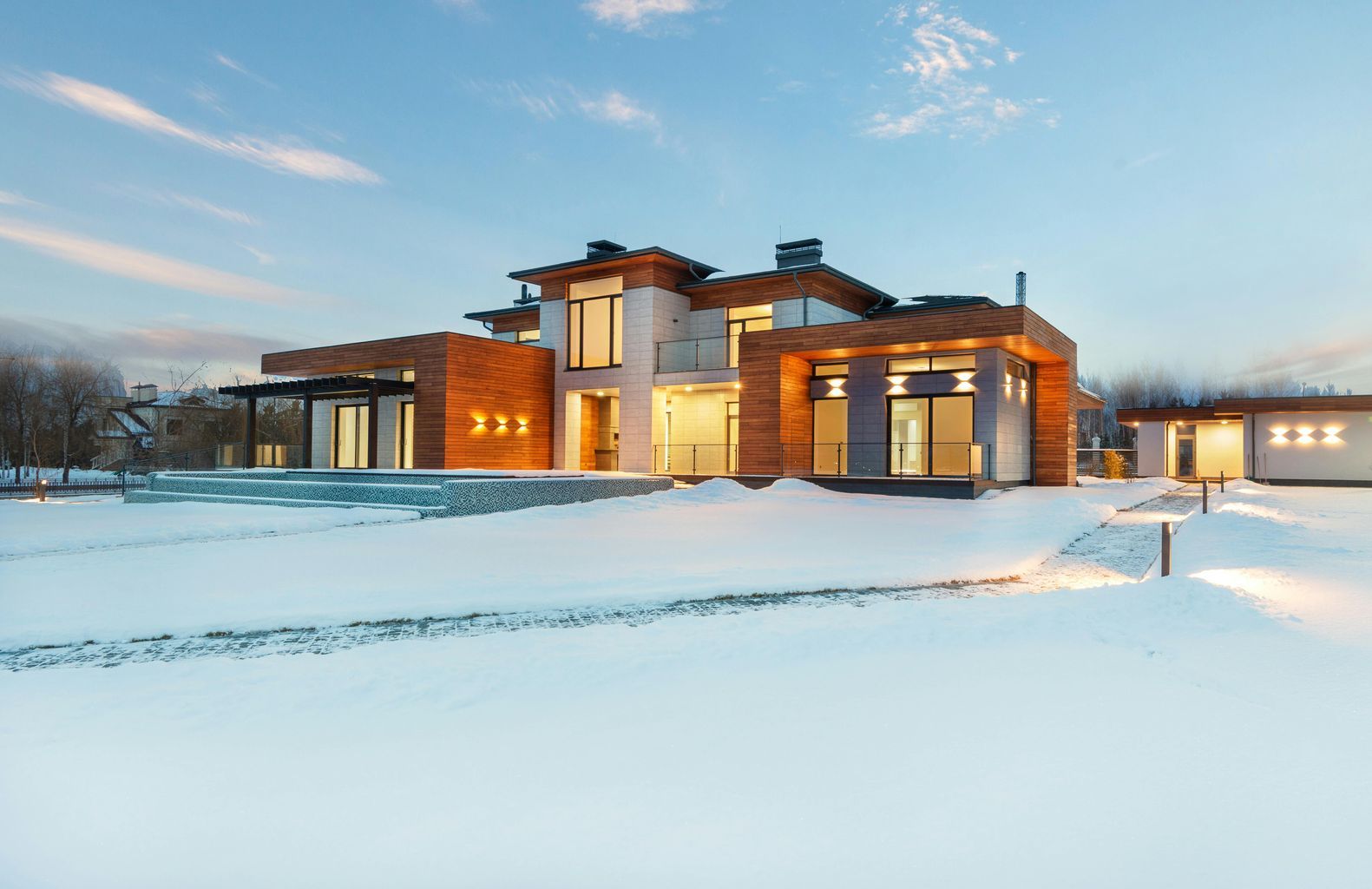Mortgages are available in different types and may be structured various ways. 30-year fixed-rate loans are the most popular kinds of mortgages for home buying. 15-year loans often are utilized to refinance a mortgage a borrower was paying down for numerous years. 5-1 or 7-1 ARM (adjustable-rate mortgage) might be a great option for someone who thinks they’ll be moving again in a couple of years.
Selecting the proper kind of mortgage depends upon the kind of borrower you are and what you are wanting to do. FHA loans, with their low down payments and milder credit requirements, may be an appealing kind of mortgage for first-time homebuyers or the ones who have flawed credit. On the other hand, borrowers who have strong credit, might receive a better deal with a conventional mortgage that is backed by Freddie Mac or Fannie Mae.
Home equity loans are types of mortgages utilized to borrow cash by using a house equity as collateral. However, a HELOC (home equity line of credit) might provide more flexibility. And cash-out refinances might be the proper option if you have to borrow a large sum of money or can decrease the rate of your mortgage in the process.
Therefore, what kind of mortgage loan is the best option for you? Let’s dive deeper:
Uses and descriptions
30-year fixed-rate mortgage
- VA, USDA, FHA, jumbo mortgage, home equity loan, cash-out refinance, mortgage refinance, home purchase
- Long-term mortgage made to be paid off in a period of 30 years at a set interest rate
15-20 year fixed-rate mortgage
- VA, FHA, jumbo mortgage, home equity loan, cash-out refinance, mortgage refinance, home purchase
- Medium-term mortgages made to be paid off in 15 to 20 years at a set rate
ARM
- Interest-only loans, jumbo mortgages, HELOCs, home equity loans, mortgage refinance, home purchase
- Mortgage that has an interest rate varying over time, based upon market conditions
Interest-only
- HELOCs, jumbo loans, home construction loans, ARMs, balloon payments
- Interest payments only for fixed time before principle has to be paid off
Piggyback Loan
- Entire or partial down payment to avoid the payment of mortgage insurance; funding jumbo part of high-end home purchase in order for the rest to be covered with a lower-rate conforming loan. Jumbo loans, ARMs, fixed rate
- Second mortgage, or lien, utilized to cover part of a home’s purchase price
Home Equity Loan
- Borrowing money for any purpose that is desired by a homeowner, frequently home improvements or additional major expenses. Balloon payment options, interest-only, ARM, fixed-rate
- Loan that is secured by the equity within a borrower’s home: i.e., the house serves as the loan’s collateral. A lien, or kind of second mortgage.
HELOC
- Borrowing funds at irregular intervals for any desired purpose. Usually, draw period is an interest-only ARM; typically, repayment is a fixed-rate loan.
- Kind of home equity loan where there’s a pre-set limit to borrow against as necessary. Generally divided into a draw period, during which it’s possible to borrow money, followed up by a period of repayment.
Reverse Mortgage
- Month-to-month stipends that supplement retirement income; month-to-month cash advances for limited period of time; HELOC to draw as necessary.
- Category of home equity loans for individuals age 62+.
Refinance
- Getting more desirable loan terms than present mortgage offers, like replace adjustable-rate loan with fixed-rate loan or vice versa, longer or shorter payoff terms, lower monthly payments, lower interest rate, among others.
- Taking out new mortgage to pay off and replace a current mortgage
Cash-out Refinance
- Borrowing money for any desired purpose by a homeowner, in addition to any of the additional possible uses of refinancing. ARM or fixed rate.
- Single transaction to both borrow against available home equity and refinance an existing mortgage.
HARP Refinance
- Refinancing primary mortgages. 15-year, 20-year, and 30-year fixed-rate options.
- A government-backed program that helps homeowners with negative and low-equity mortgages refinance to better terms.
FHA Loan
- Government program made to facilitate home ownership.
- HELOCS, ARMs, 15-year fixed-rate, 30-year, home improvement loans, cash-out refinance, refinancing, home purchase
VA Loan
- ARM, 30-and 15-year fixed-rate, cash-out refinance, home improvement loans, mortgage refinancing, home purchase
- Home loan program for veterans and members of the armed forces
USDA Rural Development Loan
- 30-year fixed-rate mortgage only, refinancing, home purchases
- Program that assists low- to moderate-income households buy a modest house in small communities and rural areas
Benefits and Drawbacks
The various kinds of mortgage loans each have their own benefits and drawbacks. Here is a breakdown of what you might or might not like about various mortgage loans.
30-year fixed-rate mortgage
- Higher long-term interest cost than a shorter-term loan, equity builds slowly, higher rates than shorter-term loans, long-term commitment
- Most common mortgage type, attractive rates, payments stable, rate does not change, low monthly payments
15-20 year fixed-rate mortgage
- Higher monthly payments than 30-year loans, lower interest payments might impact capability of itemizing tax return deductions
- Lower rates than 30-year mortgages, less interest paid over time, rate does not change, shorter payoff, stable payments, build equity rapidly.
ARM
- Unpredictable; rate might adjust higher; monthly payments might substantially increase; refinancing might be necessary to prevent large increases in payment when rates are increasing.
- Better payment flexibility than a short-term fixed-rate loan; lower initial rates
Interest-only
- Higher rates than on a fully amortizing loan; higher payments during period of amortization than on a loan in which principle payments immediately begin.
- Deferred payments on the principle; flexibility to make extra payments if needed.
Piggyback Loan
- Second lien may make refinancing more challenging. Separate bill to pay every month. Shorter amortization on a piggyback loan may make monthly installment higher than they might be for one primary mortgage.
- Higher rate of interest on a piggyback loan might be less expensive than paying for PMI (private mortgage insurance). Paying conforming rate on part of jumbo mortgage decreases interest payments.
Home Equity Loan
- Could lose house through foreclosure if you don’t make payments. Rates are greater than on primary lien mortgages. Decreased equity may make refinancing more challenging. May delay the time you own a house free and clear.
- Permits users to borrow money at lower interest rates than non-secured, other kinds of loans. Usually, interest is tax deductible
HELOC
- Might be tempted to borrow more than needed; variable interest rate might mean higher payments than expected; might lose house through foreclosure if don’t make payments.
- Borrow what’s needed, when needed; no or little closing costs; lower initial rate than a standard home equity loan; usually interest tax deductible.
Reverse Mortgage
- Costs are substantially greater than for additional kinds of home equity loans; draining equity might leave borrowers without financial reserves; extended stay inside medical care center might cause loan to be due and borrower to lose house.
- No need to pay back money borrowed for as long as you love in the house; loan liability can’t exceed home equity; borrowers selecting lifetime stipend continuously receive payments even if equity gets exhausted; payments tax-free.
Refinance
- Have to pay closing costs for a new mortgage, which might offset the benefits of lower interest rate.
- Might have the ability to obtain lower interest rate, pay off loan faster, lower monthly payments, switch from fixed-rate to adjustable-rate loan or vice versa.
Cash-out Refinance
- Higher closing costs than on home equity loans; borrowing against home equity might increase likelihood of a foreclosure during a financial crisis.
- Lower interest rate than standard home equity loans; borrowers don’t carry second lien with separate monthly bill; might have the ability to decrease rate on whole mortgage; other possible benefits of a standard refinance.
HARP Refinance
- Interest rates that are obtained through HARP refinancing are higher than the ones that are available to borrowers who have more home equity. They’re limited to mortgages backed by Freddie Mac or Fannie Mae. No cash-out refinance. Can’t be utilized to refinance second liens.
- Allows homeowners to refinance when they’d otherwise find it impossible or difficult to do so because of a lack of home equity.
FHA Loan
- Loan limits restrict amount which may be borrowed; higher costs for mortgage insurance than on a standard loan; borrowers placing less than 10% down must carry mortgage insurance for the life of the loan.
- Down payments can be low as 3.5% of home value, easy refinancing for borrowers who presently have FHA loans, competitive mortgage rates, less strict credit restrictions than conventional mortgages.
VA Loan
- Might not be used to purchase a second house if you’ve exhausted your benefit on a primary house. Can’t be used to buy property solely used for investment reasons.
- 100% financing available; competitive mortgage rates even without down payment; easy refinancing.
USDA Rural Development Loans
- Fairly low loan limits; can’t be utilized for purchases within urban regions; waiting periods may be long; has to have the ability to show current housing isn’t adequate; not offered by the majority of lenders.
- Up to 100% financing, inexpensive mortgage insurance, competitive rates, broad definition of “rural” involves many suburban regions.
Less and best suited for
Various kinds of mortgages serve various purposes. Loans that meet the need of one borrower might not be a good match for another with various finances or goals. Here is a look into how various kinds of mortgage loans might or might not be appropriate for various borrowers and situations.
30-year fixed-rate
- Borrowers refinancing a 30-year loan they have paid down over numerous years; the ones expecting to move within a couple of years; the ones who have variable incomes needing more flexible payment schedules.
- Homebuyers wanting stable, affordable payments; refinancers wanting to minimize monthly installments; owners/buyers expecting to stay in the home a long time.
15-20 year fixed-rate mortgage
- Home purchase mortgage, unless a house is affordable by your standards; borrowers needing a more flexible payment schedule.
- Buyers who refinance after paying down an original mortgage balance; the ones who want to quickly pay off their mortgage.
ARM
- Borrowers uncomfortable with unpredictability; the ones who’d be financially pressed by higher payments; borrowers who have little home equity as a cushion for refinancing.
- Borrowers wanting to minimize their short-term payments and/or rate; homeowners planning on moving in 3 to 10 years; a high-value borrower who doesn’t want to tie up their funds in home equity.
Interest-only
- Financially inexperienced borrowers, long-term mortgages
- HELOCs, construction loans which eventually will be refinanced to a conventional mortgage; short-term loans; house purchases by a well-off borrower searching for payment flexibility
Piggyback Loan
- Homebuyers who have the ability to make 20% down payment; the ones anticipating increasing proper values will allow them to cancel Private Mortgage Interest in a couple of years.
- Purchasers buying high-end properties; borrowers placing less than 20% down wanting to avoid paying for mortgage insurance.
Home Equity Loan
- Borrowers needing to borrow various sums over a time period. The ones paying an above-market rate upon primary mortgage might be better served by cash-out refinances.
- Borrowers needing to borrow lump sum money for specific purposes.
HELOC
- Borrowers needing to borrow single lump sum; the ones who aren’t disciplined in their spending habits.
- Borrowers needing to make occasional expenditures over a period of time and/or aren’t certain of the overall amount they will have to borrow.
- Retirees counting on using home equity to fund transition into assisted living; the ones wanting to keep their house in the family or preserve an inheritance.
- Retirees needing extra monthly income to have the ability to continuously live independently; retirees needing to borrow periodic sums yet lack the means to pay them back.
Refinance
- Borrowers who have a mortgage rate only somewhat higher than present market rates; borrowers who don’t plan to remain in the house long enough to recoup the refinancing cost.
- Borrowers presently paying above-market interest rates; borrowers wanting to shorten loan term; borrowers wanting to replace ARM with more predictable fixed-rate; borrowers who are faced with balloon payment.
Cash-out Refinance
- Homeowners searching for a home equity loan who’d gain no or little savings from refinancing present mortgage.
- Homeowners searching for home equity loan who also would benefit from refinancing existing mortgage.
HARP Refinance
- Borrowers who have non-Freddie Mac or Fannie Mae mortgages; the ones with at least 20% home equity; the ones searching for cash-out refinance or ARM.
- Underwater borrowers or the ones who have less than 20% home equity; the ones wanting to refinance at lower interest rate; borrowers who have ARM or upcoming balloon payment wanting to convert over to a fixed-rate loan.
FHA Loan
- First-time homebuyers, buyers who can’t place a large down payment, borrowers investing in a low- to mid-priced property, buyers searching to purchase and improve a house that has a single mortgage.
- Borrowers investing in high-end property; the ones who have the ability to place down payment of 10%+.
VA Loan
- Non-vets; vets and active duty members who’ve exhausted their basic entitlement or who want to buy investment property.
- Veterans and members of the armed forces, surviving spouses, and individuals attached to specific defense-associated institutions.
USDA Rural Development Loan
- Urban dwellers, households that have above-average incomes; couples without children or single persons
- First-time buyers who have young families; the ones currently living in outdated or crowded housing; residents of small communities or rural areas; the ones who have limited incomes
For more information about the loan programs Champion Mortgage offers and to understand how long it takes to buy a home, contact one of our friendly representatives today at (281) 727-2500.






